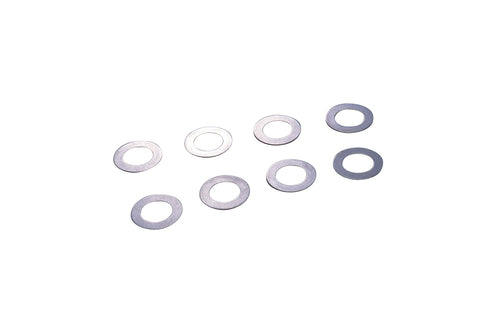When installing aftermarket valve springs in a head assembly, the amount of load applied to each spring need to be adjusted until everything is in uniform specification. This is a standard procedure which all race engines go through in order to be able to raise the engine RPM without any glitches or hesitation. The standard method involved when putting together the valve assembly is to fully balance all the added components to tighter clearances than the manufacturer specifications. This method called “blueprinting” can be time consuming and a very costly service performed by an experienced engine builder. By utilizing the various thickness of the spring sheets to adjust to each and different spring rate load, the same objective can be satisfied with fraction of the cost. All of Tomei Powered’s complete race engines are fitted and tuned with these valve spring sheets to ensure uniform specification for all areas that are necessary.
- Effects Without Spring Load Adjustment - Initially the valve springs begin to surge, becoming very sticky under loads. This leads to ample power loss but in worst case scenarios, the cotter pin may disengage from its assembly applying major damage to the engine.
- Example - When installing Tomei Type A valve springs in an RB26 and performing a three angle valve job, the stock spring load spec of 24kg is decreased to less than 20kg. By installing the Tomei Valve Spring Sheets, the spring load can be brought back to tolerance to the 24kg range, enabling the engine to rev freely once again.
- 8 Piece Set
Questions & Answers
Have a Product Question?
Be the first to ask a question about this part.

